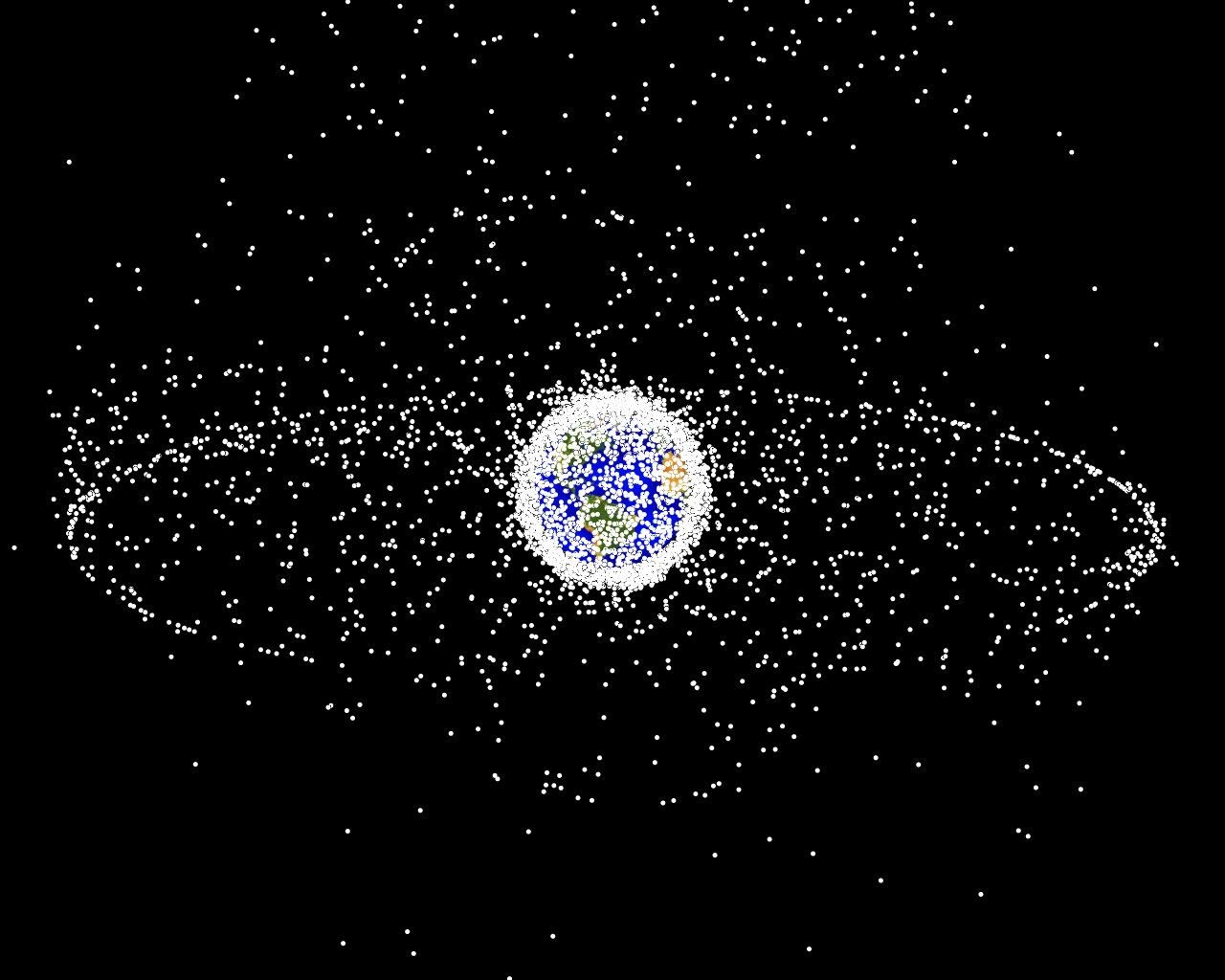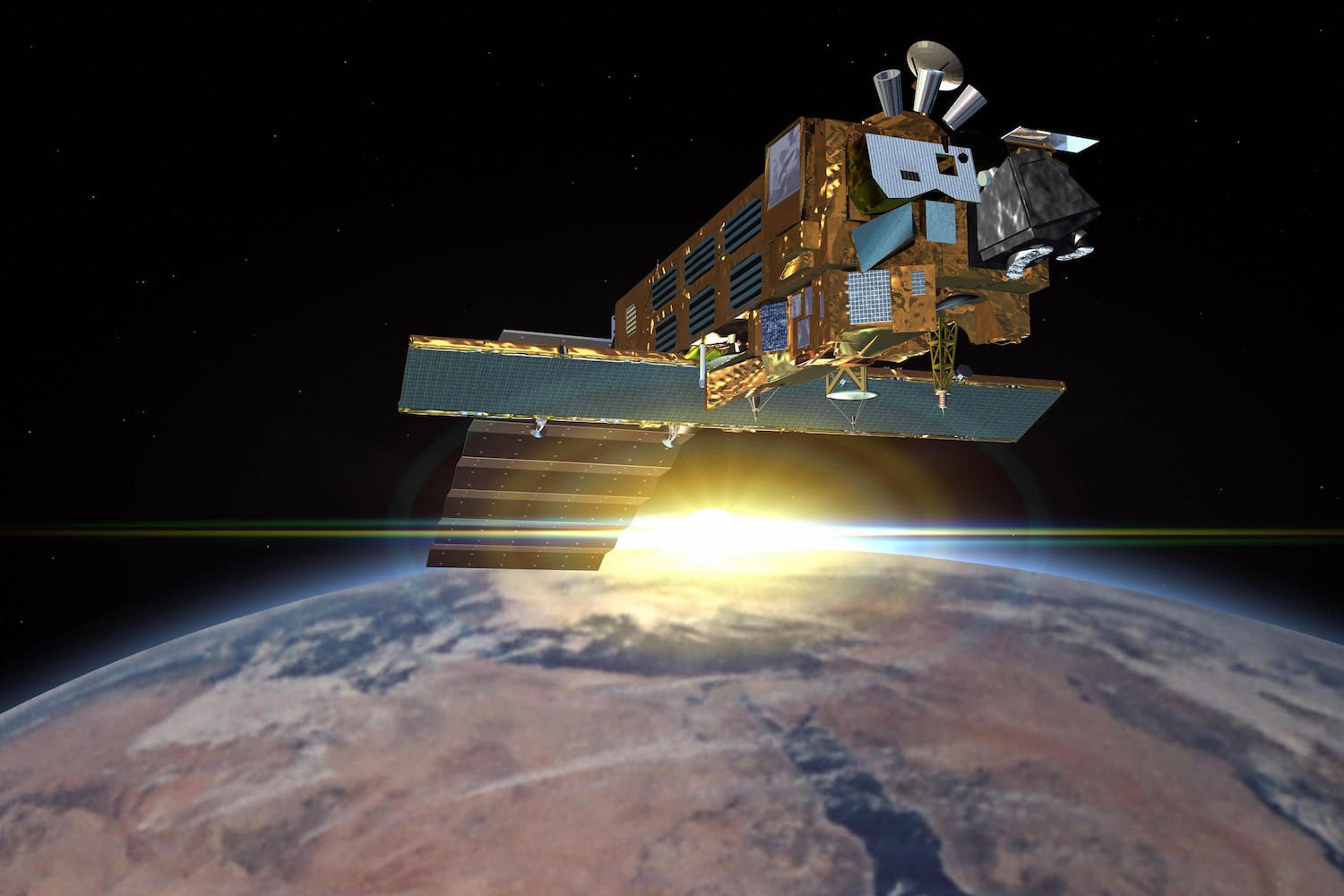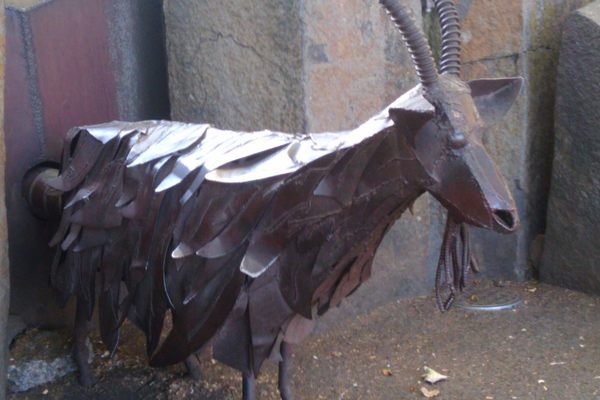Harpooning Space Junk Isn’t as Crazy as It Sounds
It’s not going to clean up every piece of orbital trash, but it could be useful.

For 10 years, the European Space Agency’s Envisat satellite orbited the Earth every 100 minutes. As it hurtled through space at an altitude of 486 miles, a suite of nine instruments surveilled the planet’s atmosphere, land, sea, and ice caps. Then, in 2012, the school-bus-sized satellite went dark. Six years later it’s still out there, in extraplanetary limbo and doing nothing much at all.
Space is beyond vast and mostly empty, but Earth’s lowest orbits are crowded—and full of trash. In 2013, NASA observed 500,000 pieces of space garbage—20,000 of them larger than a softball—and estimated that there are millions up there, too small to be tracked until they’ve dinged or gashed other satellites or space vehicles. (Moving at a speed of up to 17,500 miles per hour, even something tiny can inflict sizable damage.) Envisat is not the only thing clogging up orbit, but it is one of the biggest and most compelling; Popular Mechanics called it the “Moby Dick of space junk.”
Over the years, there have been many ideas for how to manage space debris, from tangling it in a net to frying it with lasers. NASA is currently at work on a gripping tool inspired by geckos’ feet. Last week, BBC reported that engineers at Airbus are working on a new idea that takes a cue from Ahab: a harpoon that could capture Envisat and other space junk. The weapon would be tethered to a spacecraft, Alastair Wayman, one of the project’s engineers, told BBC, so “all you have to do is sit a distance away, wait for the target to rotate underneath you, and at the right moment fire your harpoon.” Once its tip pierced the object in question, barbs would pop out, holding the debris fast and allowing the spacecraft to haul it away. During initial trials in a lab, where researchers have been using compressed air to hurl the harpoon at metal sheets, the tool has been slicing “like a hot knife through butter,” Wayman said. A miniature version will head up into space next month, and the group RemoveDebris will eject some pieces of junk and then try to recapture them.

Though a space harpoon sounds more like The Wrath of Khan than Apollo 13, the premise might not be so fantastical. John Crassidis, a professor of mechanical and aerospace engineering at the University at Buffalo and an expert in space debris, says the concept is “neat.” If you “wanna take out a big satellite,” he adds, “it’s probably a great idea.”
Wrangling massive objects in orbit is important because we don’t always know when and where they’ll fall back to Earth, and they may not just burn up in the atmosphere. China’s Tiangong-1 space station, for example, is forecast to reenter the atmosphere in the next few weeks, but the potential landing spots span multiple continents. The tumbling structure probably won’t cause much damage, but a tethered harpoon might let us guide a descent—into the wide Pacific, say.
But it’s not quite so simple. There’s a chance the harpoon doesn’t go in clean, but actually breaks its target—leaving countless small fragments in orbit instead of one, big, trackable one (like what happened when China purposely exploded one of its old satellites in 2007). And if the launching satellite is tethered to the target, both are going to burn. “That’s losing your satellite to get another satellite,” Crassidis says, and the cost could be significant. Adding to the cost is the fact that you can’t really gather more than one piece of trash this way. “You can’t just go up and easily go from one orbit to another to pick up a bunch of objects, because everything’s traveling in different directions” and possibly spinning, says Donald Kessler, a retired astrophysicist who helmed NASA’s Orbital Debris Program Office. Lisa Ruth Rand, a space junk scholar and postdoctoral fellow in history at the University of Wisconsin-Madison, sees a sea of legal issues, too. The Outer Space Treaty of 1967 stipulates that no one owns space, but people, companies, and countries do own the objects moving through it. If you’re going to go spearfishing for a satellite, you best hit the right one, and be sure that you have “watertight permission to do so and bring it down,” Rand says.

Even if the harpoon can grab hold of the largest pieces of trash, it won’t do much against the millions of smaller fragments. “There’s not much we can do about those,” Kessler says. “There’s just too many of them. We’ll never sweep them out of there.” Instead of going after these with harpoons, nets, or lasers, Rand advocates a more hands-off approach—especially for the items in low-Earth orbit. This region “is the most crowded, but also the most effectively managed by letting the natural environment do what it does,” Rand says. Orbits degrade, debris falls and incinerates. Rand describes this as “like a river—when we put a piece of debris into the river, it carries it away.”
The best solution for the future is to not introduce any more debris than necessary. The United Nations has issued recommendations for preventing and curtailing space debris, but there are no binding international agreements. “You behave well and want everyone else to behave well,” Rand says. Hammering out a code of conduct—and adhering to it—is especially important as nanosatellites proliferate. These smaller objects don’t have much in the way of propulsion, Crassidis says, and they often run their small fuel reserves dry to complete their missions, instead of holding a little back to make sure they can redirect into the atmosphere, where they would burn up.
There’s no celestial garbage truck coming, but the harpoon idea might help in very specific circumstances. So far, it’s more theoretical than practical, but “I welcome these new ideas. There’s so many really cool ones out there,” Crassidis says. “We can’t just keep dumping this stuff to our kids and grandkids.”











Follow us on Twitter to get the latest on the world's hidden wonders.
Like us on Facebook to get the latest on the world's hidden wonders.
Follow us on Twitter Like us on Facebook